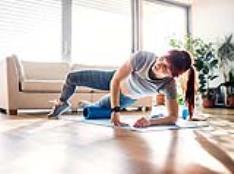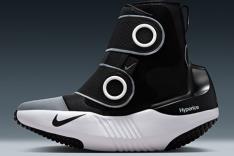More: 9 Causes of Hip Pain During and After Running
During the stance phase of running, where one foot has contact with the ground while the other leg is swinging through from the rear, the gluteus medius prevents sagging of the pelvis on the non- weight-bearing side.
In an effort to compensate for a weak gluteus medius muscle, the upper body leans itself to that weakened side. If your goal is to strut your stuff down the catwalk, this gait or "swagger" just may work for you.
However, the potential outcomes of this "sashay" have implications all the way down the kinetic chain, or leg, so-to-speak as well as potentially causing vertebral maladies, muscle tightness, and soreness along the entire spine.
During the mid-stance phase, weak gluteal muscles can cause the femur to internally rotate, the tibia (lower leg) to also rotate with respect to the ankle, and subsequently, the foot and ankle joint is essentially forced to pronate.
Bottom line: this action could result in shin splints, medial tibial stress syndrome, IT Band syndrome, "runner's knee," low back pain, and several other enigmatic running woes that may bench you for weeks if left untreated.
A strong, balanced, and supple backside can offer the runner's body a stable pelvis, and along with strong core musculature, the incidence of running injuries should decrease substantially.
How Your Butt Powers Your Cycling Performance
While cycling is a non-weight-bearing activity, it is far from easy and requires a great deal of lower body strength and power, which is ultimately supported by strong core body musculature. A developed gluteus medius will keep the hips stable in the saddle and facilitate a supported posture preventing back pain and "wiggling" of the pelvis.
More: Cycling Workouts for Triathletes
The result is increased power output and reduced fatigue. In addition, learning how to recruit all three gluteal muscles to assist the quadriceps and hamstrings can substantially increase power output and time to fatigue.
At this point, you may be completely freaked out and hopefully, never again desiring a shriveled-up booty. Embrace a strong bubble butt! And know that not only will you bring sexy back in your jeans you see faster times, stronger training sessions, and a decreased incidence of those annoying niggles.
Sir Mix-A-Lot said it best in his 1992 hit song, Baby Got Back, "You can do side bends or sit- ups, but please don't lose that butt."
More: 3 Running Workouts for Triathletes
 Search for your next triathlon.
Search for your next triathlon.
- 2
- of
- 2








Discuss This Article